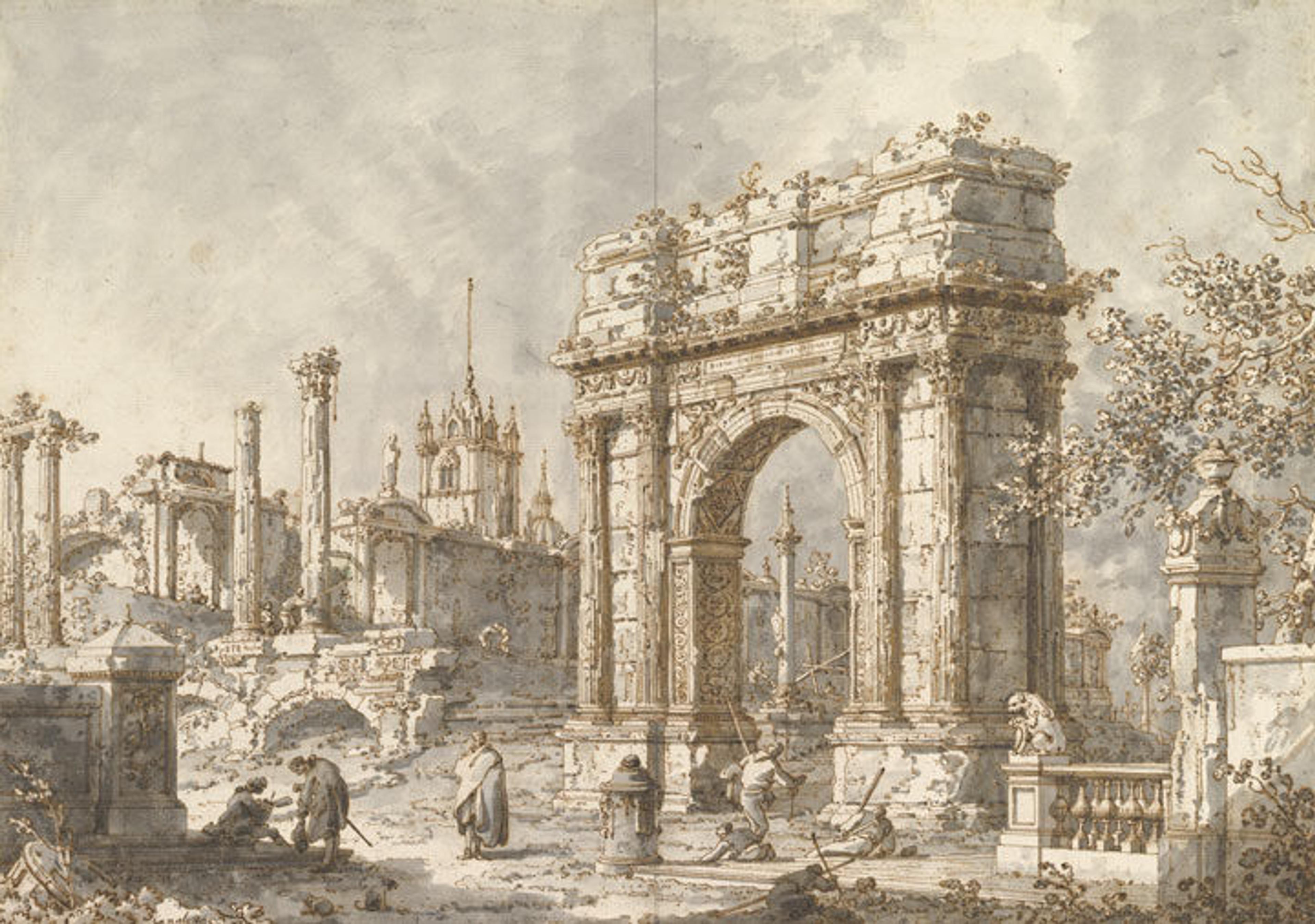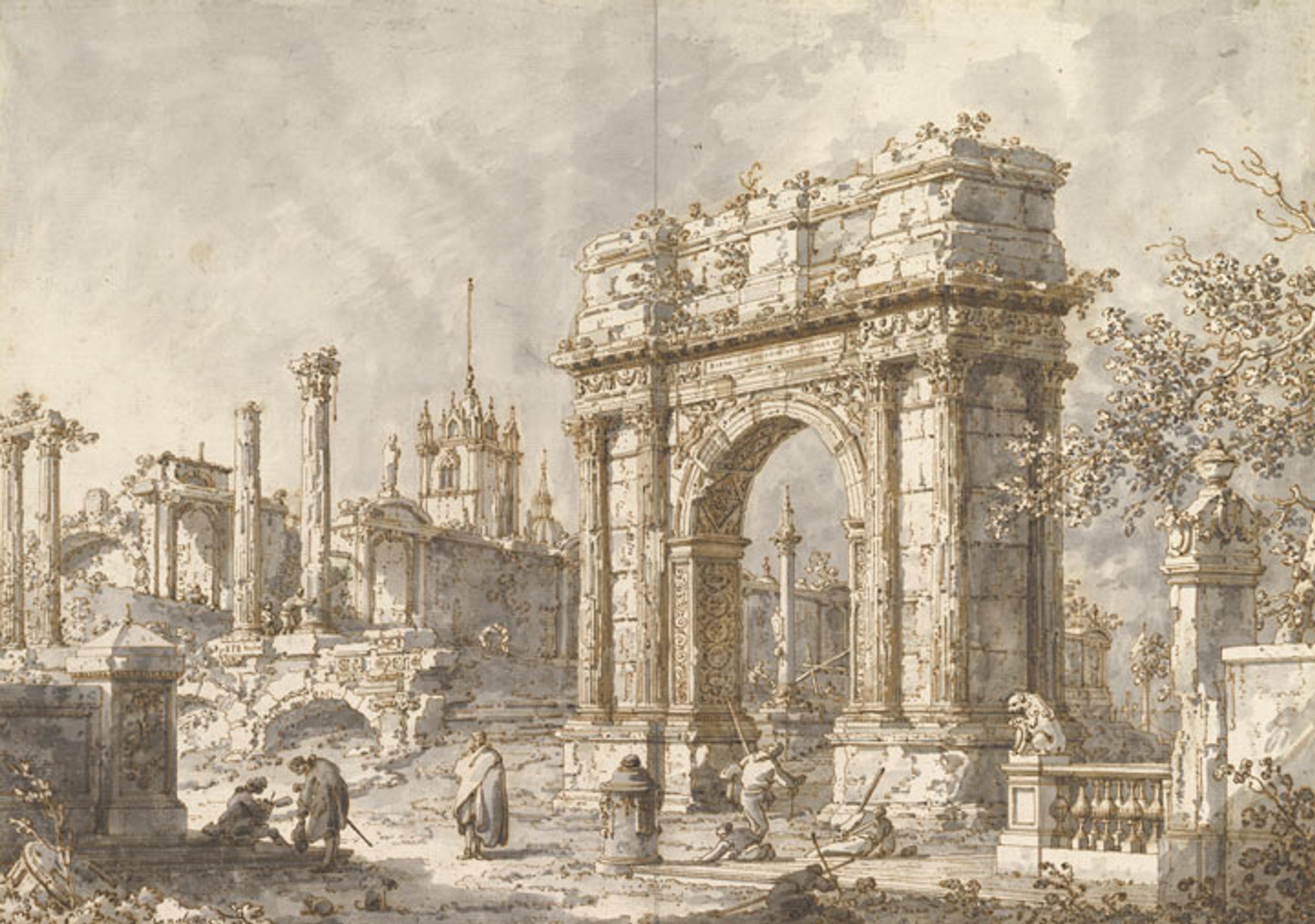
Canaletto (Giovanni Antonio Canal) (Italian, 1697–1768). Capriccio with a Roman Triumphal Arch, 1720–1730. Pen and brown ink, brush and gray wash, over traces of leadpoint or graphite; 15 x 21 1/4 in. (38.1 x 54.0 cm). The Metropolitan Museum of Art, New York, Harris Brisbane Dick Fund, 1946 (46.161)
«To celebrate the centenary of a curatorial department dedicated to works on paper, The Robert Wood Johnson, Jr. Gallery will feature one highlight per week from the collection of the Department of Drawings and Prints through April 30, 2017. Reflecting the remarkable breadth of the department's holdings, the rotating selection includes drawings and prints, as well as woodblocks, books, cut paper, and ephemera ranging from the early 15th to the 21st century.»
Canaletto's drawing Capriccio with a Roman Triumphal Arch (1720–30) combines fantasy views with scattered architectural motifs studied from life. The fanciful scene, which is distinctly Venetian despite the Roman arch that stands alongside the ruins, will be on view from August 23 through August 29.
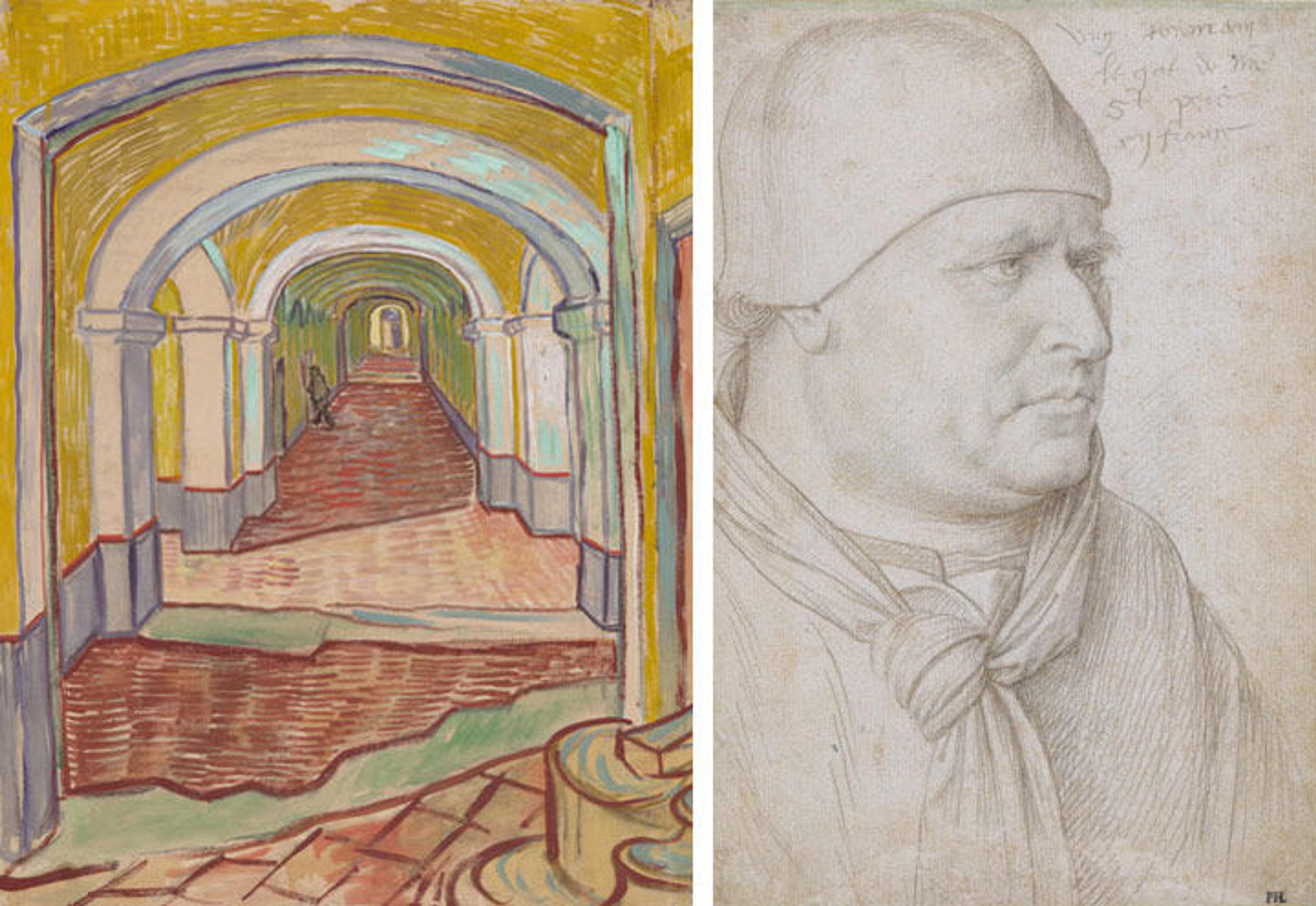
Left: Vincent van Gogh (Dutch, 1853–1890). Corridor in the Asylum, September 1889. Oil color and essence over black chalk on pink laid paper; Sheet: 25 5/8 x 19 5/16 in. (65.1 x 49.1 cm). The Metropolitan Museum of Art, New York, Bequest of Abby Aldrich Rockefeller, 1948 (48.190.2). Right: Jean Fouquet (French, ca. 1425–ca.1478). Portrait of an Ecclesiastic, ca. 1461. Metalpoint, black chalk on white prepared paper; 7 13/16 x 5 5/16 in. (19.8 x 13.5 cm). The Metropolitan Museum of Art, New York, Purchase, Rogers Fund and Gift of Mrs. Benjamin Knower, Bequest of Ogden Mills, and Bequest of Collis P. Huntington, by exchange, 1949 (49.38)
From August 30 through September 5, you'll have the chance to view Vincent van Gogh's Corridor in the Asylum (1889), a powerful depiction of the asylum in southern France where the artist spent 12 months near the end of his life. He sent the unusually large drawing to his brother Theo, to offer an impression of his surroundings at Saint-Paul-de-Mausole at Saint Rémy.
For one week beginning September 6, Jean Fouquet's Portrait of an Ecclesiastic (ca. 1461), an outstanding and rare survival of a 15th-century French work on paper, will be on view. In the sheet, Fouquet places the unidentified sitter to the left in three-quarter view, giving the legate a distance appropriate to his rank. This distance is balanced by the psychological characterization of the sitter, which is conveyed in the descriptive, sculptural treatment of the face.
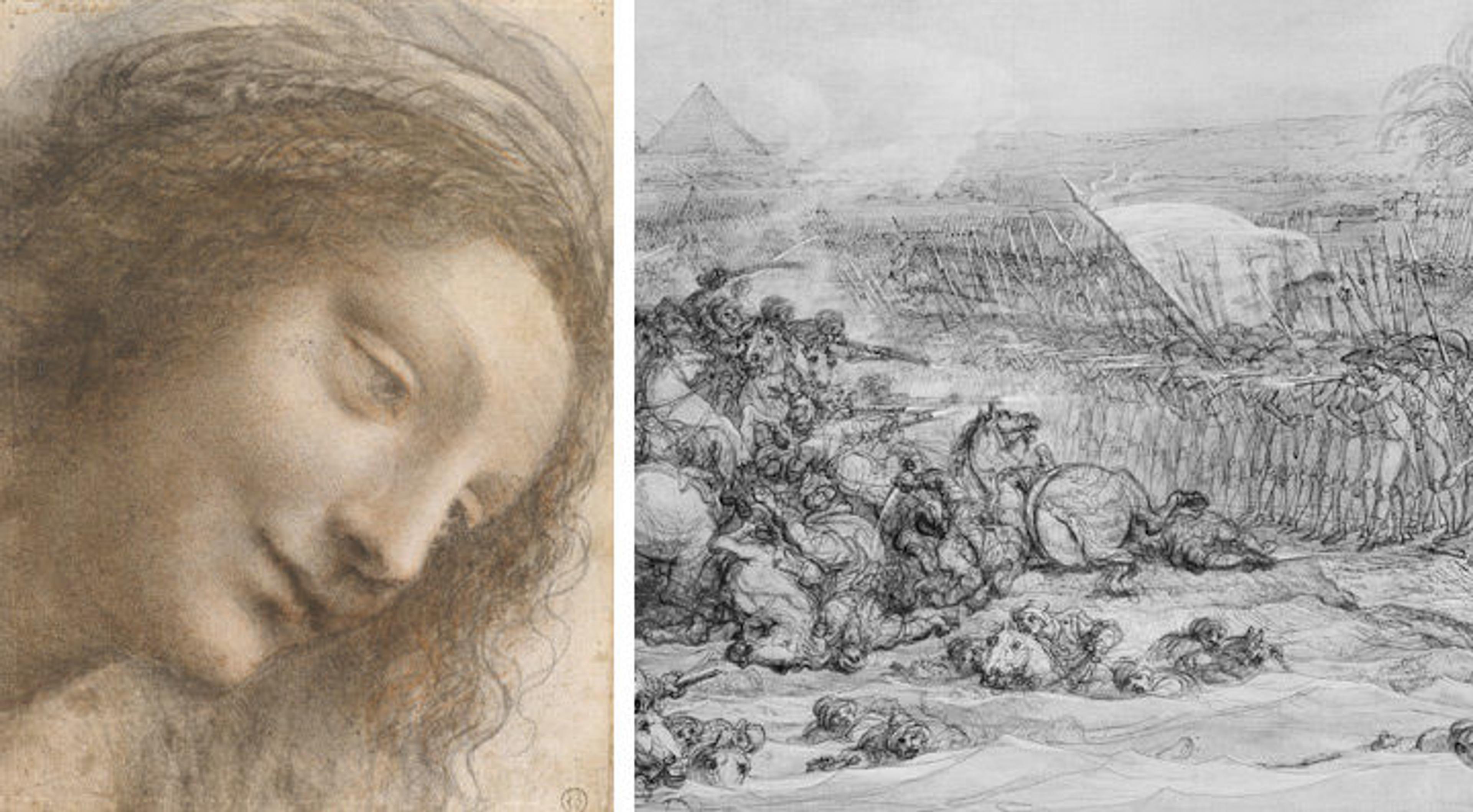
Left: Leonardo da Vinci (Italian, 1452–1519). The Head of the Virgin, 1510–13. Black chalk, charcoal, and red chalk; 8 x 6 1/8 in. (20.3 x 15.6 cm). The Metropolitan Museum of Art, New York, Harris Brisbane Dick Fund, 1951 (51.90). Right: François André Vincent (French, 1746–1816). Battle of the Pyramids, July 21, 1798 (detail), ca. 1800. Pen and blank ink, brush and brown wash, heightened with white on beige washed paper; 15 3/4 x 29 1/2 in. (41.8 x 75.1 cm). The Metropolitan Museum of Art, New York, Rogers Fund, 1951 (51.122)
Leonardo da Vinci's The Head of the Virgin (1510–13) is a hauntingly beautiful preparatory study for a painting of the Virgin and Child with Saint Anne in the Musée du Louvre, Paris. The delicate drawing technique evidences the depths of Leonardo's research on the science of vision, the infinite gradations of light and shadow, and the effects of atmospheric perspective. This masterpiece will be on view from September 13 through September 19.
Battle of the Pyramids, July 21, 1798 (ca. 1800), a large study by François André Vincent illustrating Napoleon's invasion of Egypt, will be on view from September 20 through September 26. Although Vincent never completed the canvas for which this was a study, one can see his conception of the scene, where a roiling, chaotic mass of horses and Mameluk soldiers on the banks of the Nile provided a powerful visual contrast to the orderly rows of French soldiers beyond.
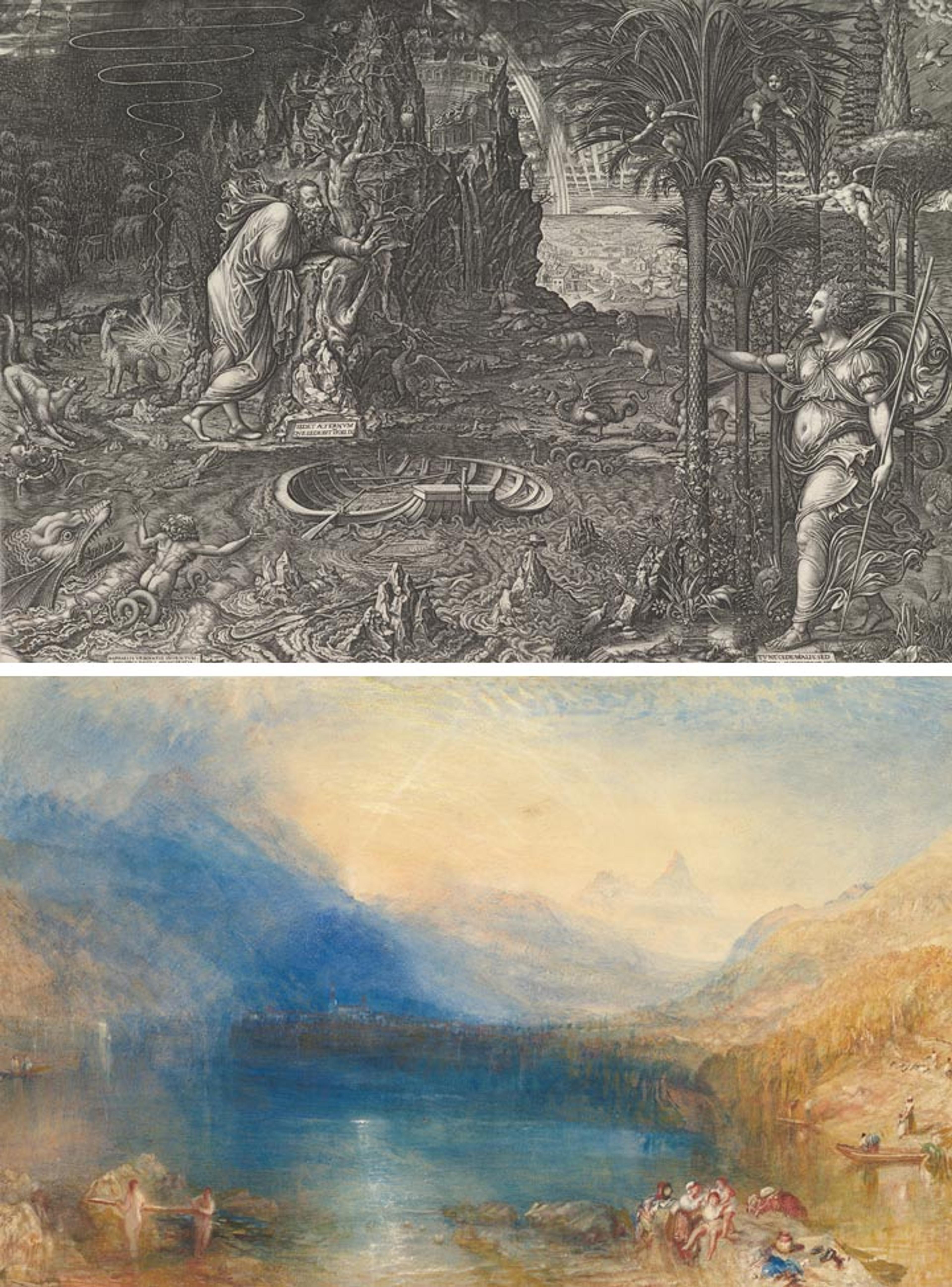
Top: Giorgio Ghisi (Italian, ca. 1520–1582). An Allegory of Life, 1561. Engraving; 14 3/4 x 21 3/16 in. (37.5 x 53.8 cm). The Metropolitan Museum of Art, New York, Harris Brisbane Dick Fund, 1953 (53.600.594). Bottom: Joseph Mallord William Turner (British, 1775–1851). The Lake of Zug, 1843. Watercolor over graphite; 11 3/4 x 18 3/8 in. (29.8 x 46.6 cm). The Metropolitan Museum of Art, New York, Marquand Fund (59.120)
From September 27 through October 3, Giorgio Ghisi's compelling and enigmatic An Allegory of Life (1561) will be installed. This image has provoked many explanations of its content, none of which have entirely resolved its meaning. In the most general terms, the print presents an allegory with a hopeful message, and the concentration required to understand the image posed a challenge that would have appealed to an educated audience in the 16th century.
After an extended sojourn in Switzerland, British artist Joseph Mallord William Turner approached his agent with the novel idea of soliciting patrons for large watercolors based on his sketches. The magical view seen in The Lake of Zug (1843), on view from October 4 through October 10, was commissioned by scholar Hugh Andrew Johnstone Munro, and then owned by art critic John Ruskin. The accomplished rendering of light and atmosphere is characteristic of Turner's finest work and exhibits a technical prowess that made the artist both controversial and celebrated.
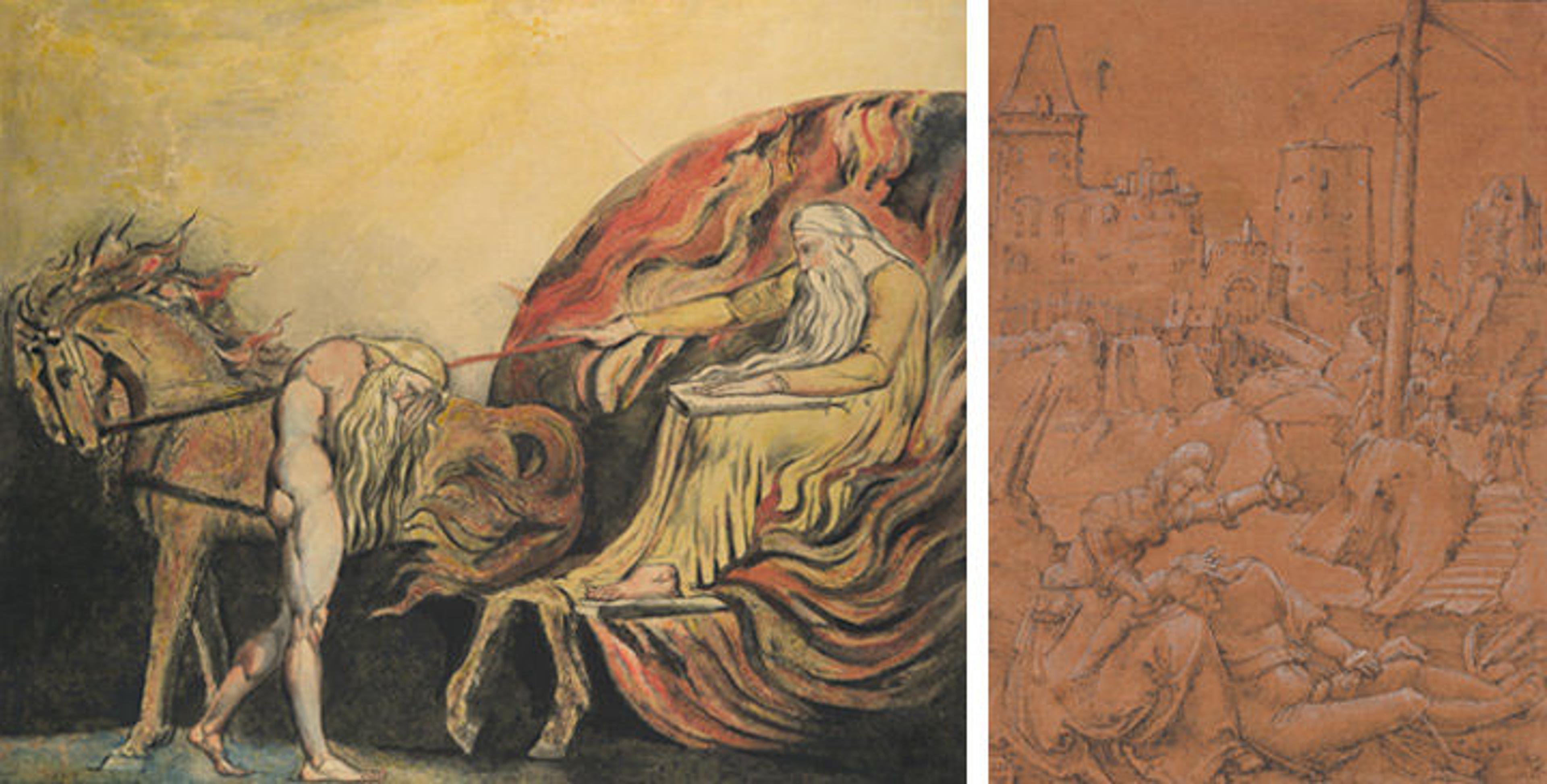
Left: William Blake (British, 1751–1827). God Judging Adam, ca. 1795. Relief etching, printed in color and finished with pen and ink and watercolor; 16 3/4 x 20 3/4 in. (42.5 x 52.7 cm). The Metropolitan Museum of Art, New York, Rogers Fund, 1916 (16.38). Right: Albrecht Altdorfer (German, ca. 1480–1538). Samson and Delilah, 1506. Pen and black ink with white heightening on brown prepared paper; 6 3/4 x 4 13/16 in. (17.1 x 12.2 cm). The Metropolitan Museum of Art, New York, Rogers Fund, 1906 (06.1051.2)
From October 11 through October 17, you'll have the opportunity to view God Judging Adam (ca. 1795), a technically inventive print by William Blake. In the print, a nude and aged Adam, newly aware of his own mortality, hangs his head before a fiery chariot bearing the divine maker, whom he closely resembles. To create the work, Blake printed the outlines of the design from a plate etched in relief, pained the colors onto a millboard, printed those in a manner resembling monotype, and, finally, enhanced the image using ink and watercolor.
Among the first important works on paper to enter The Met collection is Albrecht Altdorfer's Samson and Delilah (1506), which will be on view from October 18 through October 24. The drawing presents Samson lying asleep with his head upon Delilah's lap. In one hand she holds the scissors with which she will cut his hair and deprive him of his strength, and with the other she gestures toward the soldiers in the background who wait to arrest him. The imaginary landscape, intricate drawing style, and refined penwork displayed here are characteristic of Altdorfer's graphic manner.
Check back soon on Now at The Met to find out which highlights from the collection we will present in the late fall and winter!
Related Link
Drawings and Prints: Selections from The Met Collection, on view at The Met Fifth Avenue from July 19 through October 24, 2016
